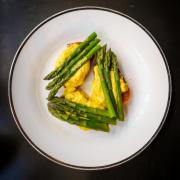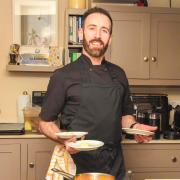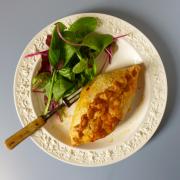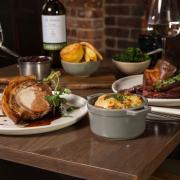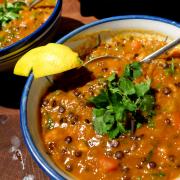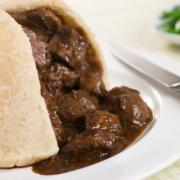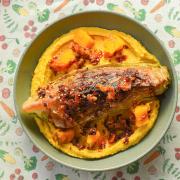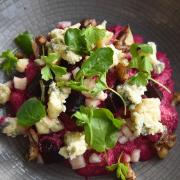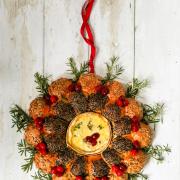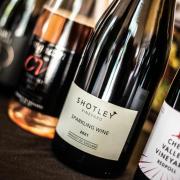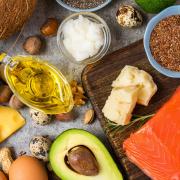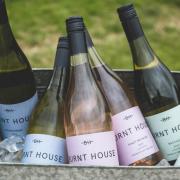Flowers are one way to say 'I love you' but chocolate speaks louder. Not all chocolate is equal, however. Luckily, Suffolk has some of the best artisan producers.
Chocolate - we eat a lot of it, most of the time without giving much thought to where it comes from or how it's produced. But the provenance and production of your chocolate can make a difference to your enjoyment of it.
Chocolate comes from cocoa beans, the fruit of cacao trees which grow in the tropical regions of the world - in fact, in countries where chocolate would melt in your hand. About 70 per cent of the world’s cocoa beans come from four West African countries, Ivory Coast, Ghana, Nigeria and Cameroon, and most cocoa growing regions are typically 10 degrees north or south of the equator.
Cocoa is usually grown by smallholder farmers who, after harvesting the ripe cocao pods, cut them open and remove the seeds (cocoa beans). The beans are then fermented, often centrally for the local growers, then dried, cleaned and packed into sacks for market, where they then get sent across the world to be made into chocolate products.

Suffolk chocolate maker Deanne Tilston from Tosier Chocolate at Little Blakenham, buys her beans direct from the grower, via a co-operative, ensuring an open and mutually beneficial form of trade with the farmers. "Not the cheapest," says Deanna "but Direct Trade is so much better than Fairtrade and the grower gets paid properly for their crops."
READ: 50 Fabulous things to do in 2022
Deanna then works her magic by processing the beans to create fabulous small-batch Tosier chocolate. "First we have to sort through the beans by hand to check for impurities or spoiled beans, then we roast slowly over a low temperature." Talking to Deanna I discover that each bean has its own individual roasting profile. When she chooses bean, Deanna goes for the flavour she likes.
"I choose beans with a strong flavour profile, fruity beans. For example, the beans from Haiti have very strong sour cherry notes. Before committing to buying beans, I’ll try samples, and test roast and taste the liquor to determine the flavour profile." This is a key stage in developing the flavour characteristic of the chocolate. In fact, roasting develops the delicious flavours that we associate with chocolate.
Deanna then places the roasted beans in a winnowing machine. "The whole bean is cracked and the husk is taken from the nib," she explains. "It is the nib that we use to make the chocolate. Nibs are then ground for three days, as the resulting chocolate needs to be smooth and not gritty."
I'm keen to know what Deanna adds to the nibs to create the finished chocolate and if it's true that the best chocolate should only contain three ingredients, cocoa beans, cocoa butter and sugar. "We add organic unrefined cane sugar and cocoa butter. Cocoa butter makes it easier to work with. For example, the Ecuador bean has very little natural cocoa butter so we add 6 per cent cocoa butter to be able to mould it."

Patience is obviously an important factor in making chocolate - the next stage involves the un-tempered chocolate resting in slabs for a whole month. It is then tempered, a process of heating and cooling to stabilise the chocolate, giving it a smooth, glossy finish. Finally, it's made into bars which when cooled and set will be wrapped by hand. I wonder if the secret of a good bar of chocolate is in the snap? It's a 'yes' from Deanne. "It's a sign of good tempering. Chocolate with a lot of cocoa butter added to it is not as snappy."
READ: A pretty walk around Flatford and Dedham
Tosier chocolate is dairy free and generally made at 65 per cent cocoa or above, the type of chocolate that is so intense and deep in flavour, you wouldn’t eat a whole bar at once. Understanding a little about the process of making chocolate makes me appreciate that, like fine wine, each batch is unique. It's about the provenance of the bean, the type of soil in which it has been grown, fermentation, as well as roasting and grinding. Craft chocolate makers search out the best beans while ensuring sustainability and investing in the growers in order to improve farmers' livelihoods.
Another excellent Suffolk chocolate maker, also making a name for single origin craft chocolate, is Pump Street (pumpstreetchocolate.com) run by father and daughter team Chris and Joanna Brennan. Deanna says Chris gave her enormous encouragement when she started her own chocolate venture for which she's grateful, Pump Street are among her favourite makers and she particularly likes Pump Street Ecuador 85 per cent with sourdough. Pump Street started as a bakery and Chris and Joanna are creating their own exciting flavour combinations, innovatively bridging the gap between the two products that they are well known for. They also make an excellent range of milk chocolate.
As well as bars of chocolate Deanna enjoys making dragees and bon bons. Her son Emile, a chef, has joined the business and has created the delicious Freddy Rocks, Piedmont hazelnut truffles which are hand rolled in 70 per cent PISA Haiti chocolate, winning an Academy of Chocolate Bronze Award in 2021. Deanna sees the bon bons, dragees and gifting market as an promising opportunity for 2022.
In non-Covid times, Tosier runs factory tours and workshops where you can learn more about chocolate making. More information at tosier.co.uk
Also try...
Other chocolatiers in Suffolk making and selling superb chocolates, perfect for a Valentine’s Day treat.
Cocoa Mama
Eye
cocoamama.co.uk
Marimba World
Bury St Edmunds and Sudbury
marimbaworld.com
B Chocolates (honey chocolates)
Online
bchocolates.co.uk
Harris and James
Beccles
harrisandjames.com
Xocolat by Louis
Online
xocolatbylouisbeckett.co.uk
SUBSCRIBE: Get Suffolk magazine monthly and discover more about our great county
The perfect Valentine dessert
Whisky and chocolate are a match made in heaven and this recipe for a very delicious chocolate and whisky roulade will give you enough to go back for more. I used Tosier Semuliki Forest fine cocoa powder, which is sourced in Uganda, for the roulade sponge, and Pump Street dark baking pastilles (Ecuador 85 per cent Hacienda Limon) for the chocolate whisky truffle filling.
Why not experiment and search out interesting flavour profiles of cocoa and chocolate that you like? Read the label and tasting notes, check the origin of the cocoa beans - it’s like going on a voyage. Artisan chocolate shopping is quite exciting, especially if it’s been made in Suffolk, and so much more than just choosing a bar of chocolate based on a cocoa percentage printed on a label.

Chocolate Whisky Roulade (for two to share with spare)
Ingredients
3 eggs separated
110g caster sugar
25g cocoa powder
For the truffle filling
150ml double cream
100g dark chocolate drops or a bar chopped up.
25g butter
4 tablespoons whisky
Caster sugar to dust
Method
Preheat the oven to 180C/160 Fan/Gas 4. Lightly grease a 20cm x 20cm (8inch x 8 inch) shallow cake tin. Line with a large piece of baking parchment, making diagonal cuts in the corners so that it fits snugly into the corners of the tin.
Whisk the egg whites in a scrupulously clean bowl (any grease will stop them from whisking). They must be stiff enough to be able to tip the bowl upside down without losing them.
Place the egg yolks and sugar into a mixing bowl and whisk together until pale and creamy and beginning to thicken. Sieve the cocoa powder and carefully fold into the whisked egg yolks until well combined.
Add the whisked egg whites to the chocolate mixture a little at a time. Folding in two tablespoons first to slacken the mixture and carefully folding in the rest without losing too much air/bulk. Pour this mixture into the prepared tin, tipping it to evenly distribute. Don’t use a spoon to spread it out or you will knock the air out.
Bake in the oven for 15 minutes, until the surface is just slightly springy to touch but the centre is still soft. Leave the sponge in the tin to cool (it will sink a little - don’t panic!). Meanwhile make the chocolate truffle filling. Place the chocolate in a heatproof bowl. Heat the cream and butter gently in a saucepan until just simmering. Pour the hot cream over the chocolate and stir until well mixed and the mixture is smooth and glossy. Add the whisky, mix well and leave to cool, placing in the fridge to chill as soon as it is cool enough.
Take a new sheet of baking parchment, a little bigger than the sponge and sprinkle with caster sugar. Flip/tip the sponge out flat onto the sugared paper and remove the lining paper, peeling back carefully.
Take the cooled chocolate and cream truffle mix from the fridge, which should just be beginning to set on the top and around the edges of the bowl. Whisk the chocolate cream truffle mix until it begins to thicken like whipped cream and is a suitable consistency to spread. If it won’t whisk chill it for a little longer.

Spread the roulade with the whipped truffle. With one of the edges facing you use the baking parchment to help you roll up the sponge as tightly as possible. Use the paper to wrap around the roulade to help transfer to a serving plate. Don’t worry if the roulade cracks - it is supposed to!




